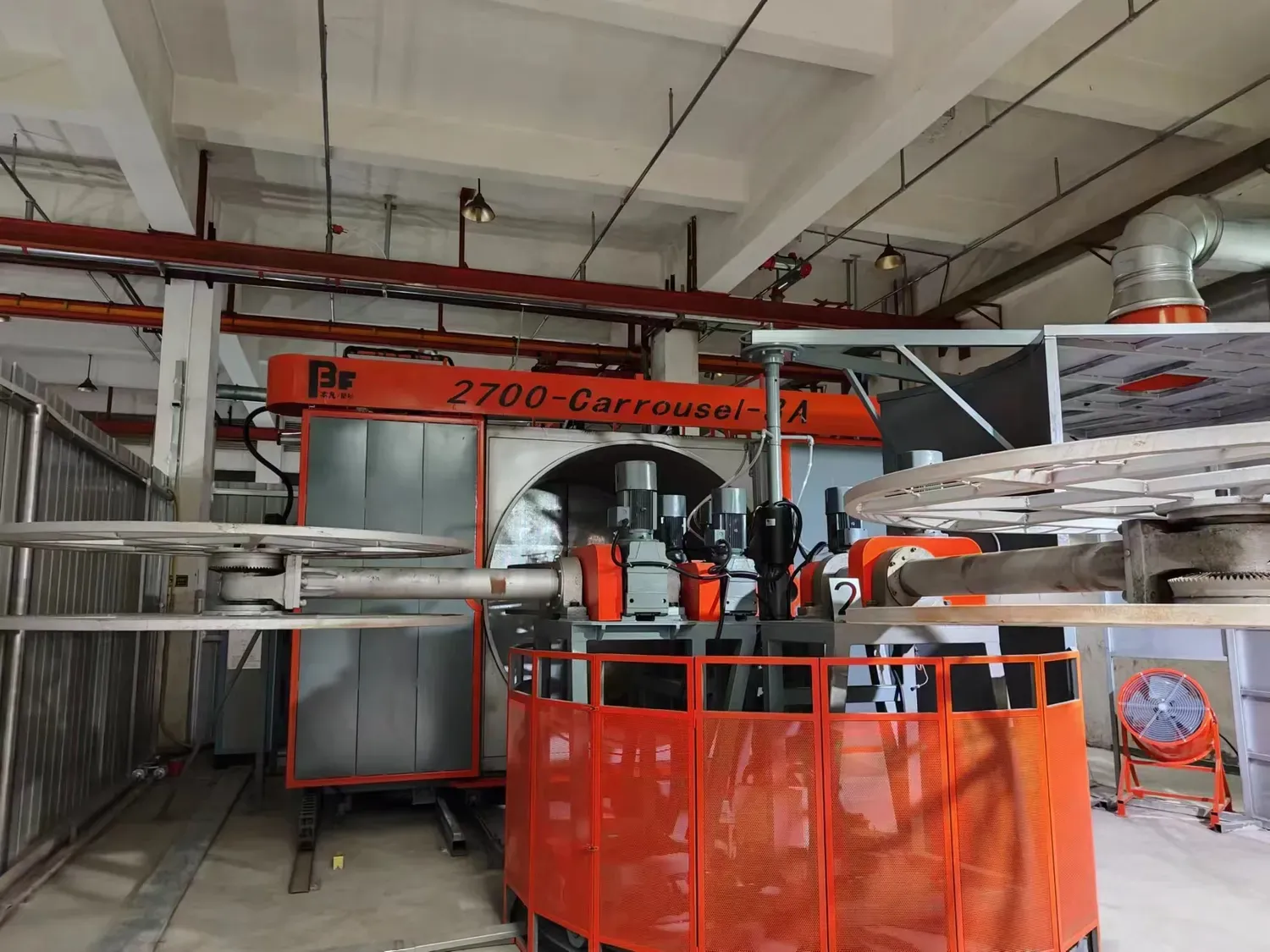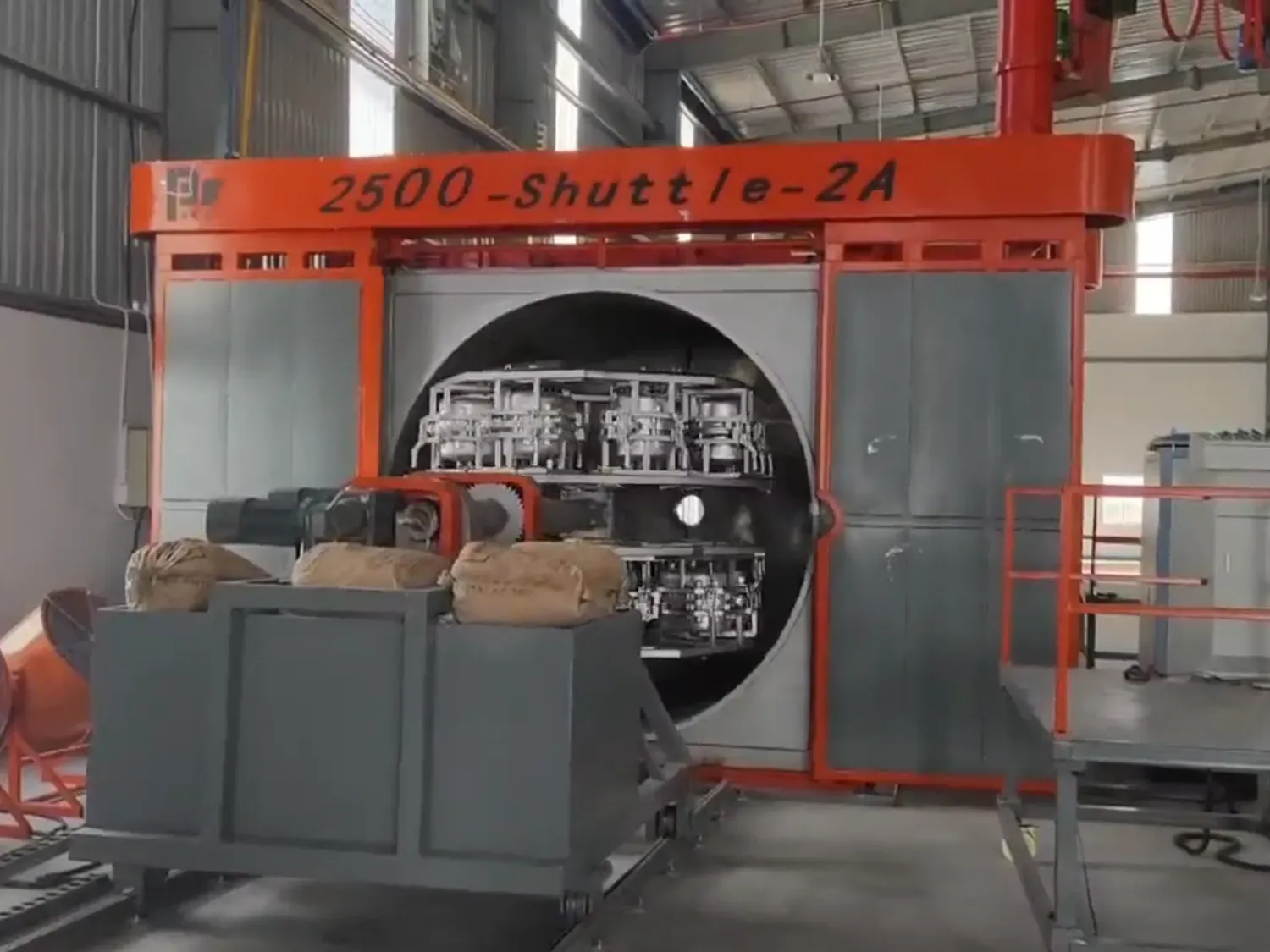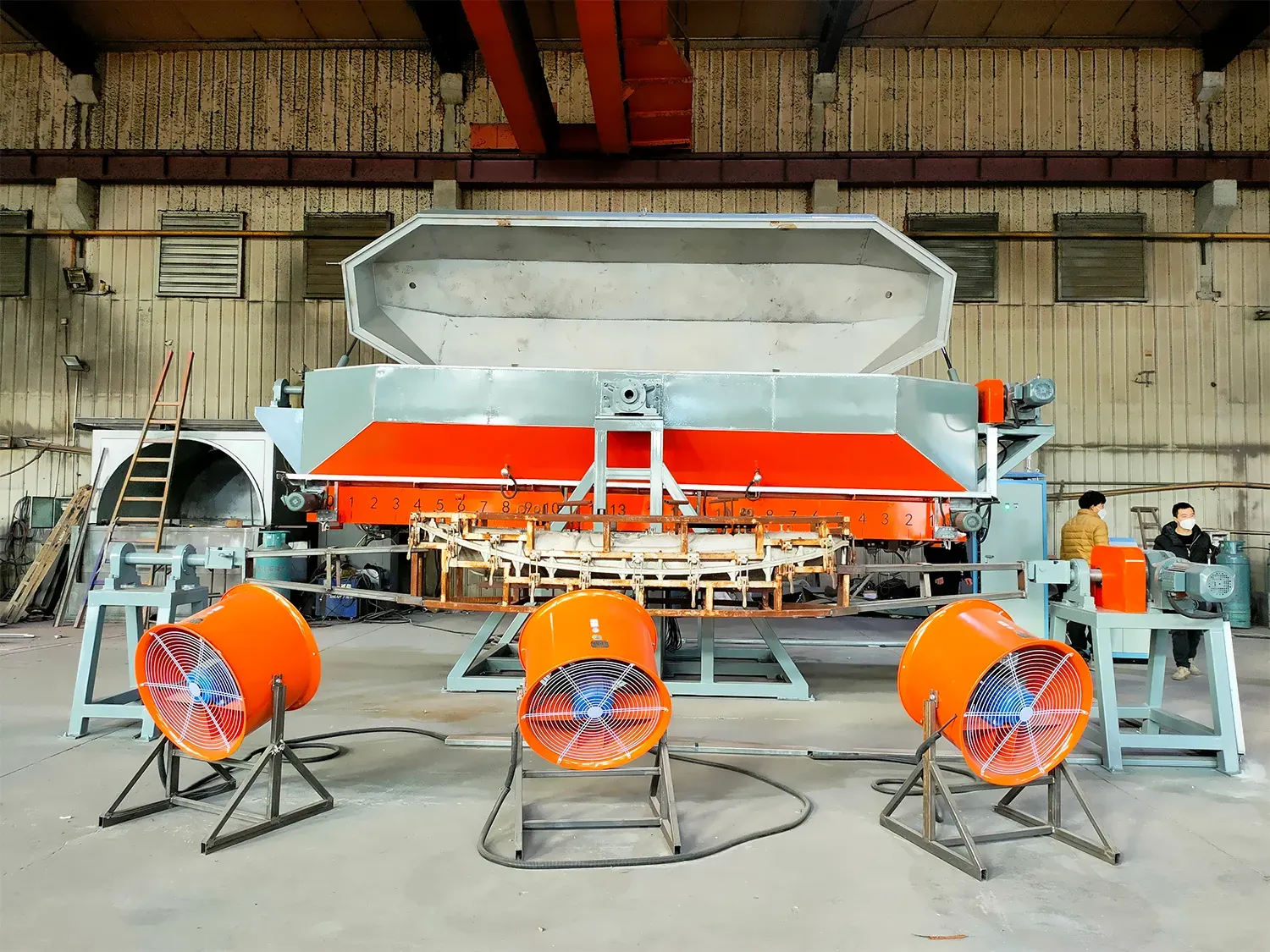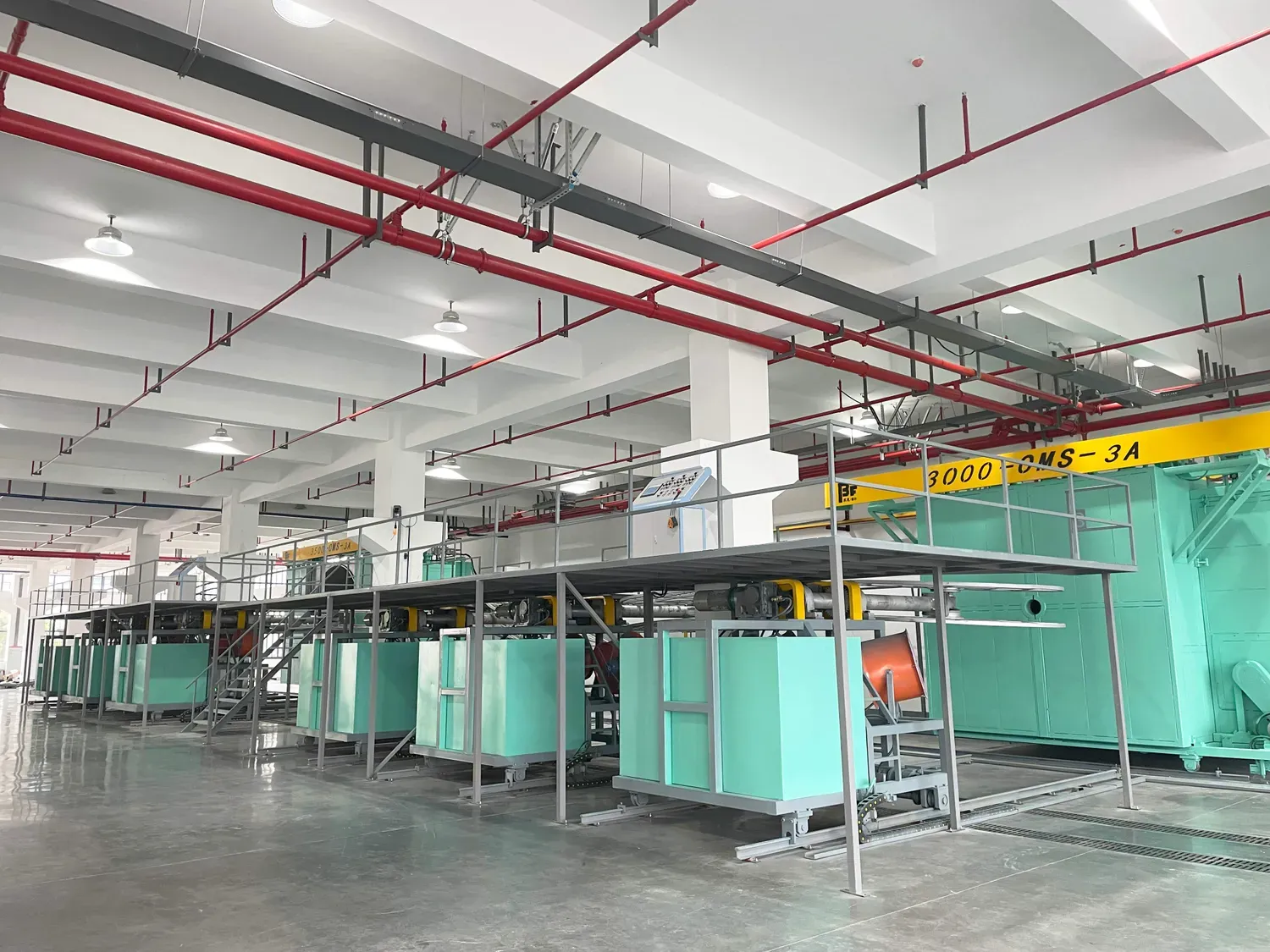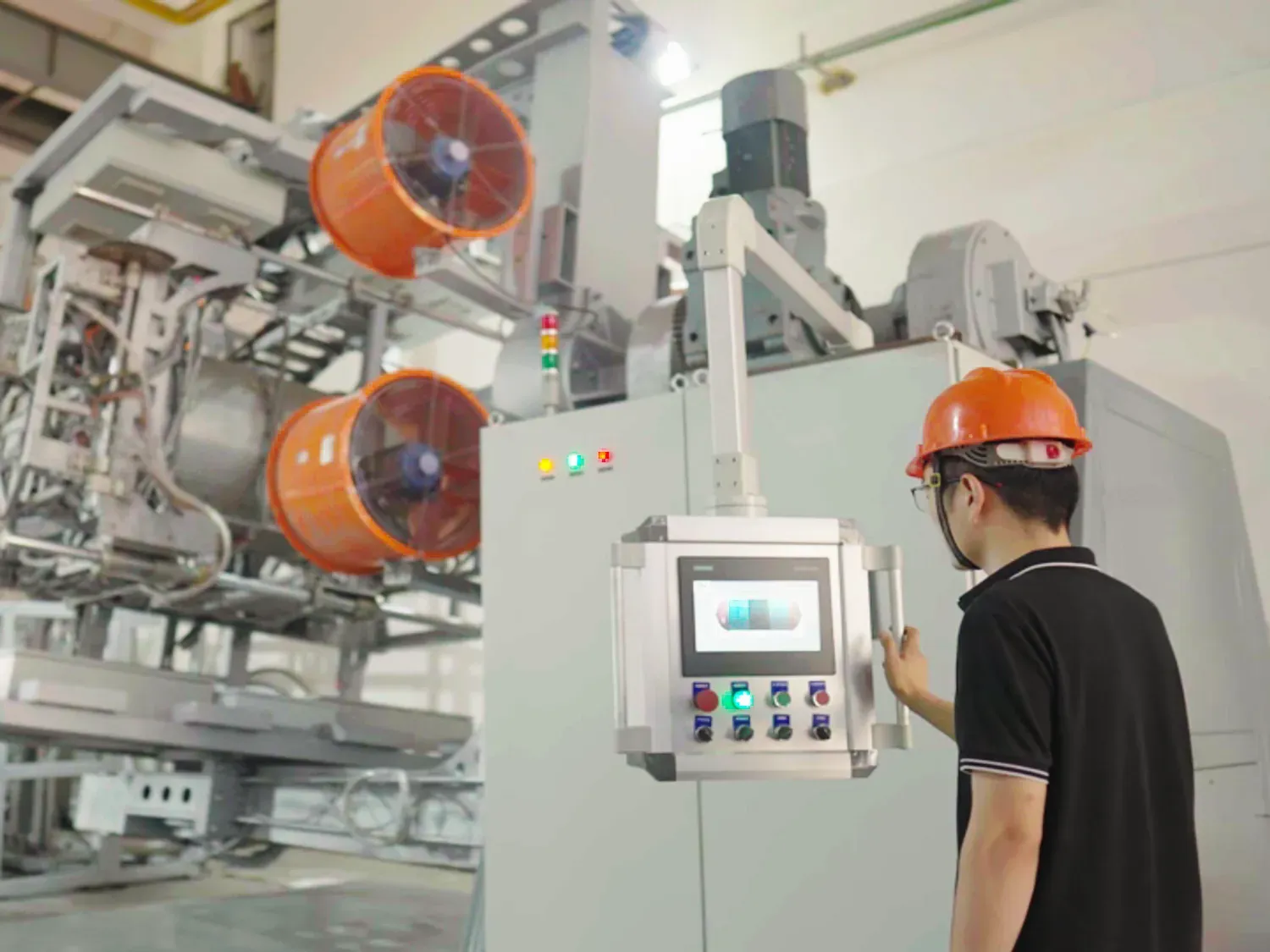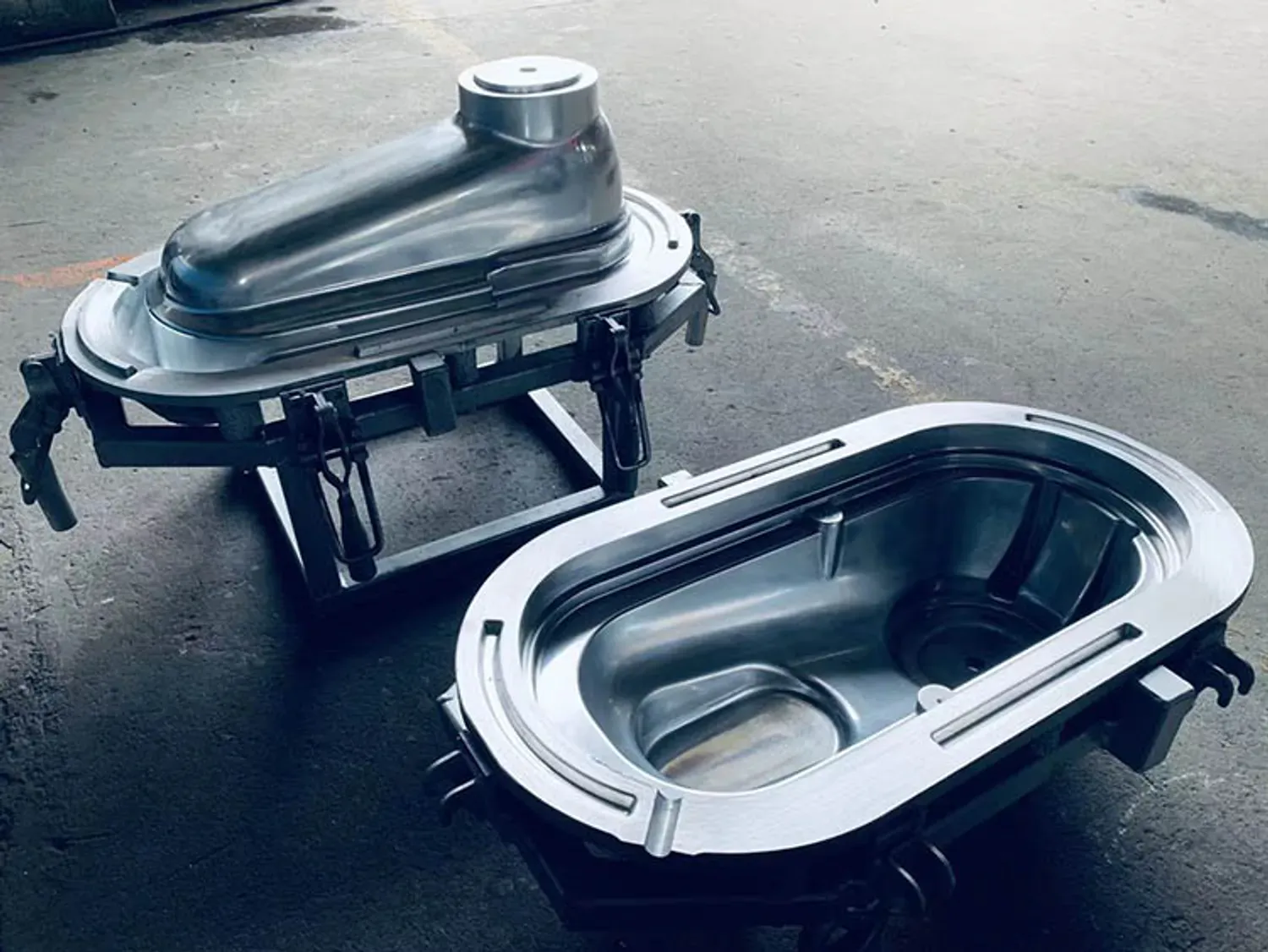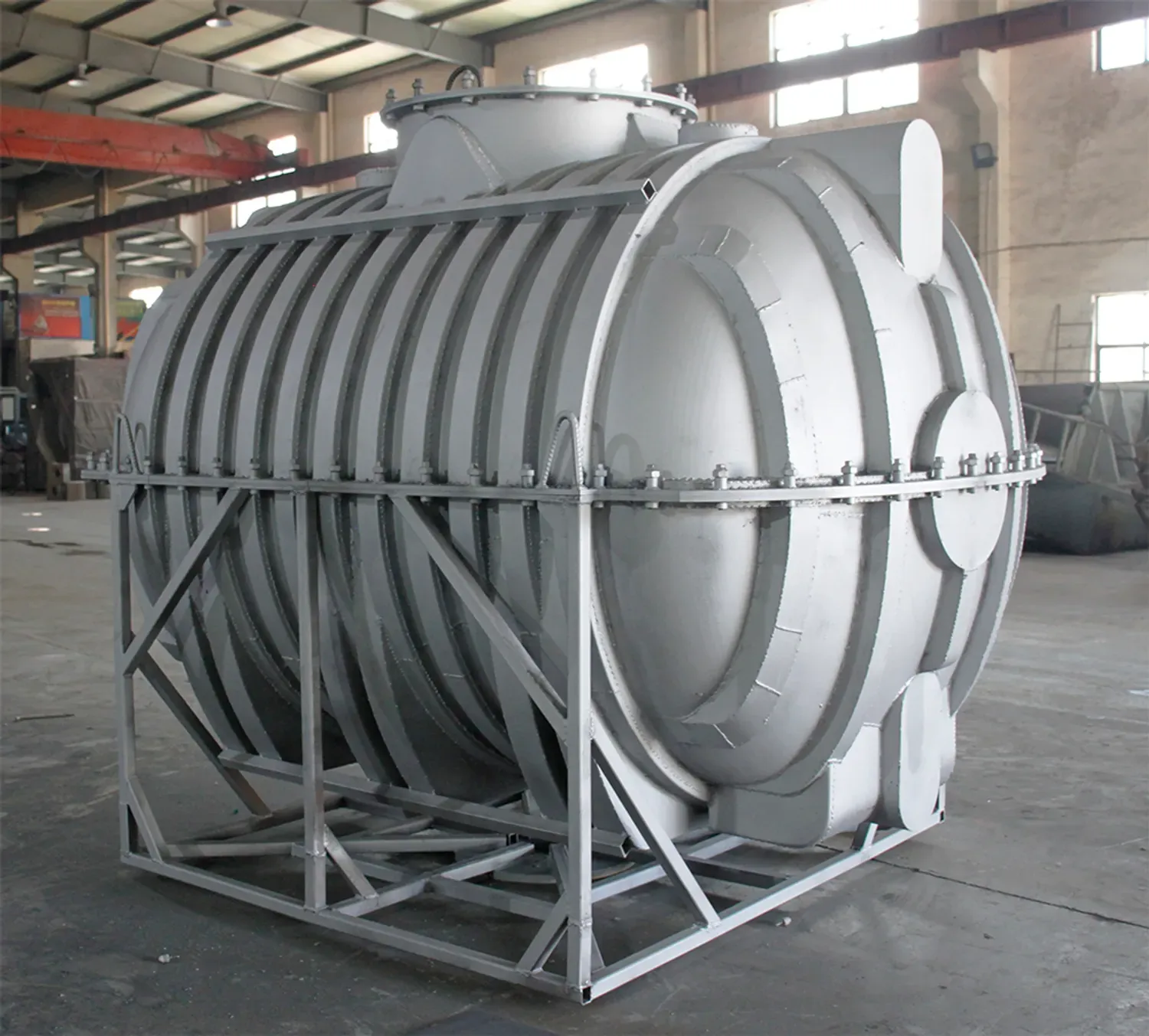
Get A Quote
The Ultimate Guide to Rotational Molding Machines: Everything You Need to Know
Rotational molding, often referred to as rotomolding, is a versatile manufacturing process used to create hollow plastic products. Unlike other molding processes, rotational molding relies on heat and biaxial rotation to evenly distribute material within a mold, creating durable and seamless products. This process has been pivotal in producing items ranging from large storage tanks to intricate toys. The evolution of rotational molding machines has allowed for greater efficiency, precision, and the ability to handle increasingly complex designs.
The journey of rotational molding machines began in the mid-20th century, with early models being simple, manually operated devices. Over the decades, technological advancements have led to the development of sophisticated machines capable of automating the process and producing high-quality parts at scale. Today, several types of rotational molding machines cater to different manufacturing needs, each with its unique advantages and applications.
The Rotational Molding Process Step-by-Step
Mold Preparation
The first step in the process is preparing the mold. Molds for rotomolding can be made from aluminum, steel, or cast iron, depending on the application. The mold is cleaned and prepared to ensure that the finished product has the right texture and quality.
Loading the Material
Once the mold is ready, it is loaded with powdered plastic (usually polyethylene, PVC, or other thermoplastics). The material is measured and loaded into the mold’s cavity.
Heating and Rotation
The mold is then placed in an oven, where it is heated to a specific temperature. The mold is rotated slowly on two axes (typically vertical and horizontal) to ensure the plastic powder evenly coats the inside of the mold.
Cooling the Mold
After the material has fully melted and formed a uniform layer on the mold, the mold is removed from the oven and cooled. Cooling is often done in a controlled environment or with water to speed up the process.
Demolding
Once the product has cooled and hardened, it is removed from the mold. This is the final step before the product is checked for quality and finishing touches.
Types of Rotational Molding Machines
Rotational molding machines come in various forms, each designed to meet specific production requirements. The most common types include:
- Carrousel Rotomolding Machine: A multi-arm machine that allows simultaneous molding of multiple parts.
- Shuttle Rotomolding Machine: Features moving arms that shuttle molds between the oven and cooling stations.
- Rock and Roll Rotomolding Machine: Designed for long, narrow products by rotating the mold on a single axis.
- Oven Moveable Rotational Machine: Features a movable oven, allowing greater flexibility in the production process.
- Electrical Heating Rotational Machine: Uses electrical heating elements for precise temperature control and energy efficiency.
Each of these machines offers unique benefits and is suited to different types of production, making it essential for manufacturers to choose the right machine based on their specific needs.
Carrousel Rotomolding Machine
The Carrousel Rotomolding Machine is a highly efficient system designed for large-scale production. It features multiple arms that rotate simultaneously, allowing manufacturers to mold several products at once. This setup significantly reduces cycle times and increases output, making it ideal for industries that require high-volume production.
Advantages of Carrousel Rotomolding Machines:
- High Productivity: Multiple molds can be processed at the same time, increasing efficiency.
- Versatility: Capable of producing a wide range of products, from large tanks to small components.
- Energy Efficiency: Shared heating systems reduce overall energy consumption.
Applications:Carrousel machines are widely used in industries such as automotive, agriculture, and consumer goods, where large quantities of uniform products are required.
Shuttle Rotomolding Machine
The Shuttle Rotomolding Machine is characterized by its ability to move molds between heating and cooling stations. This movement allows for continuous production, as molds can be prepped or cooled while others are in the oven. The shuttle design is particularly beneficial for medium to large-scale production where flexibility is needed.
Key Benefits:
- Continuous Production: Reduces downtime by allowing for simultaneous heating and cooling.
- Flexibility: Can accommodate a variety of mold sizes and shapes.
- Reduced Cycle Time: Faster transitions between heating and cooling phases.
Common Uses:Shuttle rotomolding machines are popular in industries such as water treatment, recreational products, and furniture manufacturing, where a diverse range of products is produced.
Rock and Roll Rotomolding Machine
The Rock and Roll Rotomolding Machine specializes in producing long, narrow parts by rotating the mold on a single axis. This machine is ideal for products like kayaks, canoes, and large pipes, where traditional multi-axis rotation is not required.
Operational Principles:
- Single-Axis Rotation: The mold rocks back and forth while rotating, ensuring even distribution of material.
- Targeted Applications: Specifically designed for long, narrow products that do not require complex shapes.
Advantages:
- Cost-Effective: Simpler design reduces initial investment and maintenance costs.
- Specialization: Ideal for specific products that other machines may struggle with.
Applications:Commonly used in the marine industry, as well as for large structural components and custom-shaped products.
Oven Moveable Rotational Machine
The Oven Moveable Rotational Machine offers unparalleled flexibility by featuring a movable oven. This design allows the oven to move between different workstations, providing the ability to process multiple molds with varying requirements simultaneously.
Functionality:
- Movable Oven: Increases flexibility by allowing the oven to travel between different molds.
- Customizable Settings: Each mold can have tailored heating and cooling cycles.
Benefits:
- High Customization: Ideal for custom orders or small batches with different specifications.
- Space Efficiency: Reduces the need for multiple ovens, saving floor space.
Industries:This machine is particularly useful in industries where diverse product lines are required, such as custom manufacturing, automotive components, and prototype development.
Electrical Heating Rotational Machine
The Electrical Heating Rotational Machine represents a modern approach to rotational molding by utilizing electrical heating elements instead of traditional gas or oil-fired systems. This method offers precise temperature control and improved energy efficiency.
Overview of Electrical Heating:
- Precision: Electrical heating allows for exact temperature settings, reducing the risk of overheating or underheating the mold.
- Environmental Impact: Cleaner and more sustainable compared to fossil fuel-based systems.
Use Cases:
- High-Precision Products: Ideal for products that require strict quality control.
- Environmentally Conscious Production: Suited for companies looking to reduce their carbon footprint.
Benefits:
- Energy Efficiency: Lower operating costs and reduced energy consumption.
- Cleaner Operation: No emissions from combustion, making it suitable for indoor use.
Comparison of Different Rotational Molding Machines
When selecting a rotational molding machine, it is essential to compare the various types based on factors like production needs, energy consumption, and the specific products being manufactured.
Performance Analysis:
- Carrousel vs. Shuttle Rotomolding Machines: Carrousel machines offer higher throughput, while shuttle machines provide greater flexibility.
- Rock and Roll vs. Oven Moveable Machines: Rock and Roll machines are specialized, while Oven Moveable machines offer versatility.
Energy Efficiency:
- Electrical Heating vs. Traditional Heating: Electrical heating systems are more energy-efficient and environmentally friendly.
Materials Used in Rotational Molding
Rotational molding primarily uses thermoplastics, with polyethylene being the most common due to its excellent flow characteristics and durability. However, other materials such as nylon, PVC, and polypropylene are also used depending on the application.
Factors Influencing Material Selection:
- Product Requirements: Mechanical properties, such as strength and flexibility, dictate material choice.
- Cost Considerations: Material cost and availability play a significant role in the decision-making process.
- Environmental Impact: The recyclability of materials is increasingly important in sustainable manufacturing.
Rotational Aluminum Mold
Rotational Aluminum Molds are popular in the industry due to their lightweight, excellent thermal conductivity, and ability to produce intricate details.
Advantages:
- Heat Distribution: Aluminum molds heat up and cool down quickly, reducing cycle times.
- Design Flexibility: Suitable for complex designs and fine details.
- Durability: Despite being lightweight, aluminum molds offer good resistance to wear and tear.
Applications:Commonly used in the production of toys, automotive components, and small to medium-sized containers.
Rotational Steel Mold
Rotational Steel Molds are known for their strength and durability, making them ideal for large, high-volume production runs.
Benefits:
- Longevity: Steel molds can withstand high volumes and extended use without degradation.
- Strength: Suitable for producing large or heavy-duty items.
- High Tolerance: Steel molds maintain precise dimensions over long production runs.
Comparison with Aluminum Molds:
- Cost: Steel molds are generally more expensive but offer longer lifespans.
- Application: Used for larger, more robust products like tanks and industrial components.
Customizing Rotational Molds
Custom molds, whether aluminum or steel, allow manufacturers to meet specific client needs. Customization can include unique shapes, logos, or features that are integral to the final product.
Customization Options:
- Design Features: Incorporate brand logos, text, or intricate patterns.
- Material Choice: Depending on the product's requirements, choose between aluminum or steel.
- Case Studies: Examples of successful custom molds can illustrate the benefits of investing in customized tooling.
Factors to Consider:
- Cost vs. Benefit: Weigh the cost of custom molds against the potential increase in marketability and product appeal.
- Production Volume: Custom molds are more cost-effective for large production runs.
How to Choose the Right Rotational Molding Machine
When selecting a rotational molding machine, consider factors like:
Production Volume: Higher-volume productions require carousel or rock-and-roll machines, while smaller runs may benefit from single-arm machines.
Product Size: Large products need machines with sufficient mold capacity and appropriate rotating mechanisms.
Material Compatibility: Not all machines are compatible with all types of plastic, so make sure your machine can handle your desired material.
Cost: While rotational molding has low tooling costs, machine prices vary. Assess your production needs to find the best investment for your budget.
Maintenance of Rotational Molding Machines
Regular maintenance of rotational molding machines is crucial for ensuring long-term performance and avoiding costly downtime.
Regular Maintenance Practices:
- Lubrication: Regular lubrication of moving parts to prevent wear.
- Inspection: Routine inspections for signs of wear or damage.
- Cleaning: Keeping molds and machines clean to ensure high-quality outputs.
Common Issues and Troubleshooting:
- Uneven Heating: Can lead to inconsistent product quality; ensure all heating elements are functioning correctly.
- Mechanical Failures: Regularly check for loose or worn parts that could lead to breakdowns.
Tips for Extending Lifespan:
- Preventive Maintenance: Schedule regular check-ups to catch potential issues early.
- Operator Training: Ensure that all operators are properly trained in machine use and maintenance procedures.
Troubleshooting Common Issues in Rotational Molding
Even with the best equipment, occasional problems can arise during the rotational molding process. Here are some common issues and how to address them:
Uneven Wall Thickness: This can occur if the mold is not rotating properly or if the heating process is uneven. Regularly check the machine’s alignment and heating elements to prevent this issue.
Air Bubbles or Voids: These can appear if there’s too much air trapped inside the mold during the heating process. Proper venting and mold design can help prevent air pockets from forming.
Product Deformation: If the mold cools too quickly or unevenly, the product may become misshapen. Ensure the cooling process is gradual and consistent to prevent warping.
Mold Wear: Over time, molds can wear out, leading to defects in the products. Regular inspections and mold maintenance can help prolong the life of your molds.
Future Trends in Rotational Molding Technology
The rotational molding industry is continuously evolving, with innovations that enhance efficiency, reduce environmental impact, and expand the possibilities of what can be manufactured.
Innovations in Machine Design:
- Automation: Increased use of robotics and automation to reduce manual labor and improve precision.
- Smart Machines: Integration of IoT and sensors for real-time monitoring and adjustments.
Advances in Mold Materials:
- Composite Molds: Development of composite molds that offer the benefits of both aluminum and steel.
- Additive Manufacturing: 3D printing is being explored for creating complex molds that were previously impossible to manufacture.
- Sustainability: Focus on reducing waste and improving the recyclability of products and materials.
Choosing the Right Rotational Molding Machine for Your Needs
Selecting the appropriate rotational molding machine depends on various factors, including the type of products being manufactured, production volume, and budget.
Key Factors to Consider:
- Product Requirements: Understand the specific needs of your product, such as size, complexity, and material.
- Cost vs. Performance: Evaluate the initial investment against the machine's capabilities and long-term benefits.
- Real-World Examples: Review case studies or examples of companies successfully using different types of machines.
Final Recommendations:
- For Large-Scale Production: Carrousel and shuttle machines are recommended for their high throughput.
- For Specialized Products: Consider rock and roll or oven moveable machines for their tailored capabilities.
- For Energy Efficiency: Electrical heating machines offer modern solutions with lower operating costs.
FAQs about Rotational Molding Machines
What is the difference between Carrousel and Shuttle Rotomolding Machines?
- Carrousel machines operate multiple arms simultaneously, making them suitable for high-volume production. Shuttle machines, on the other hand, shuttle molds between heating and cooling stations, offering more flexibility in production.
How does electrical heating compare to traditional heating methods?
- Electrical heating provides more precise temperature control and is more energy-efficient than traditional gas or oil-fired systems, making it a more environmentally friendly option.
Which materials are best for rotational molds?
- Aluminum and steel are the most common materials. Aluminum is preferred for its lightweight and fast heat transfer, while steel is chosen for its durability and strength in high-volume production.
Can aluminum molds be used for high-volume production?
- Yes, aluminum molds can be used for high-volume production, especially when quick heat transfer is necessary. However, for extremely high volumes, steel molds may be more durable.
What are the advantages of custom molds?
- Custom molds allow for tailored designs, including unique shapes, logos, and features. They are particularly beneficial for branding and meeting specific client needs.
How to maintain a rotational molding machine for optimal performance?
- Regular maintenance includes lubrication, inspection, and cleaning. Preventive maintenance schedules and proper operator training are also essential for ensuring long-term performance.
Conclusion
Rotational molding machines are a cornerstone of the manufacturing industry, offering versatility and efficiency in producing a wide range of plastic products. Whether you're investing in a Carrousel machine for large-scale production or a Rock and Roll machine for specialized products, understanding the different types of machines and their applications is crucial. With ongoing innovations in materials and technology, the future of rotational molding promises even greater advancements, making it an exciting time for manufacturers to explore this process.

